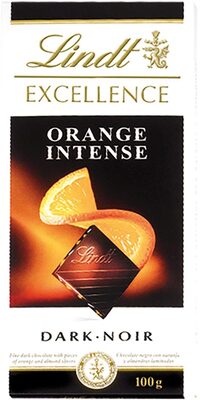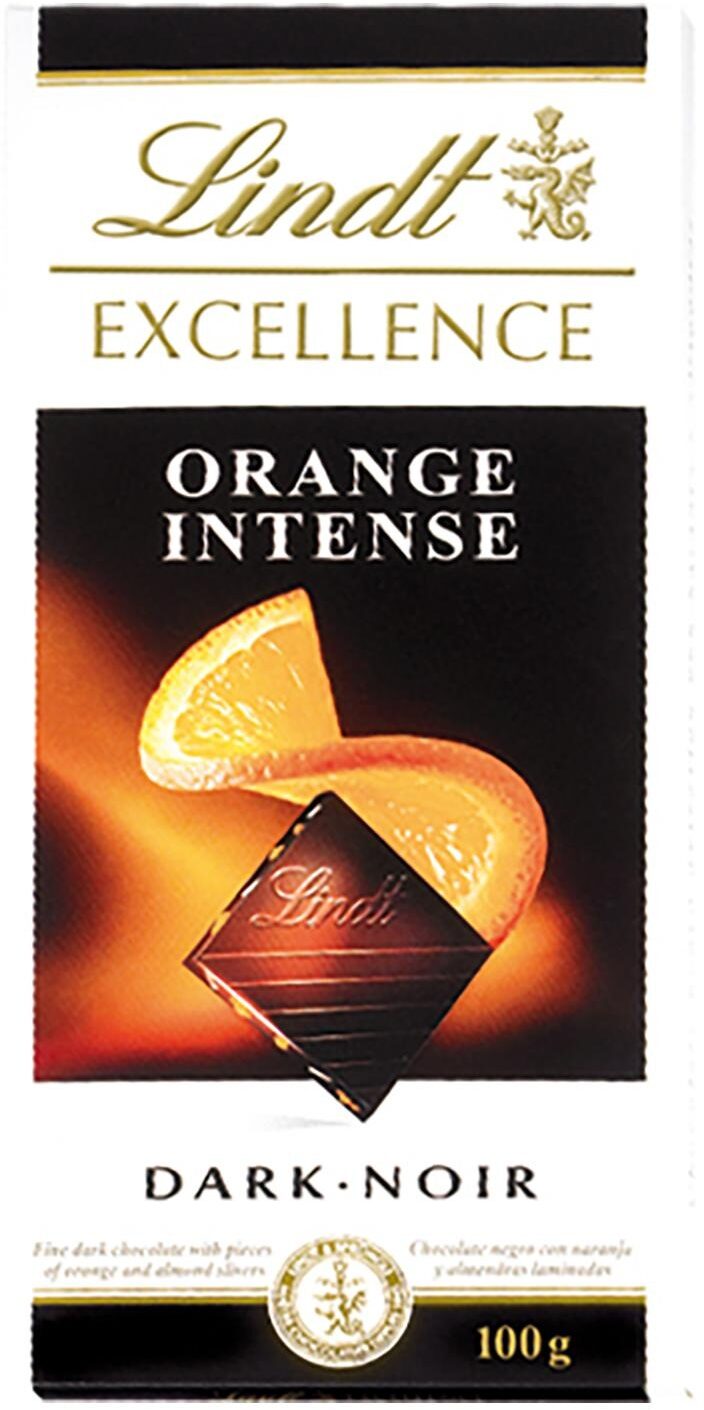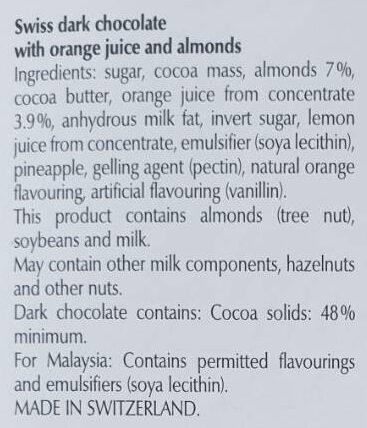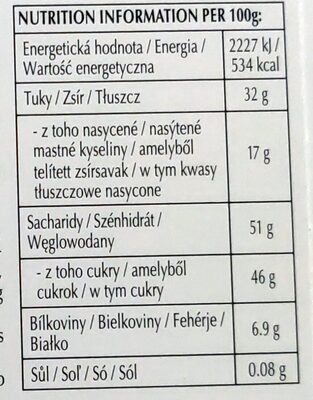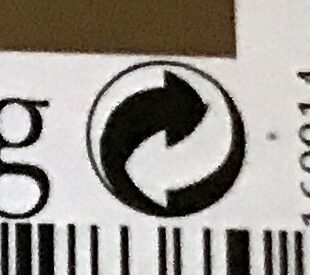Lindt Excellence Dark Orange Intense - 100 g
Codi de barres: 3046920028370 (EAN / EAN-13)
Nom comú: plain dark chocolate with orange juice and almond.
Quantitat: 100 g
Empaquetament: en:Metal, 22 PAP, en:Recyclable Metals, Alumini, en:Punto verde, en:container, es:Carton
Marques: Lindt, Excellence
Categories: Snacks, Aperitius dolços, Cacau i derivats, Xocolata, Xocolata negra, en:Chocolates with almonds, en:Dark chocolate bar with less than 70% cocoa, en:Dark chocolates with almonds, en:Dark chocolates with orange, en:Extra fine dark chocolates, en:Flavoured chocolates, en:Flavoured dark chocolates
Etiquetes, certificacions, premis:
Punt verd, Fet a Suïssa, Aromes naturals, en:Artificial flavors, en:Lindt & Sprüngli Cocoa Farming Program
Origen dels ingredients: Suïssa
Llocs de fabricació o processament: Kilchberg, Zurich, Suiza
Codi de traçabilitat: 040503190004
Enllaç a la pàgina del producte en el lloc oficial del productor: https://www.chocolate.lindt.com/lindt-ex...
Botigues: Tesco, Irma.dk, COOP, Ahorramás
Països on es va vendre: Bolívia, República Txeca, Dinamarca, Estònia, França, Hongria, Itàlia, Països Baixos, Polònia, Espanya, Suïssa, Tailàndia, Regne Unit
Matching with your preferences
Report a problem
Fonts de dades
Producte afegit per balise
Última modificació de la pàgina del producte per 5m4u9.
La pàgina del producte, també editada per acuario, aleene, asmoth, bank-pc, claraf, date-limite-app, ecoscore-impact-estimator, elttor, foodless, foodrepo, inf, insectproductadd, kiliweb, lucianocolangelo78, manu1400, mathias, moon-rabbit, musarana, openfood-ch-import, openfoodfacts-contributors, packbot, quechoisir, rayleigh1, redspider, risajanda, scanbot, sebleouf, smoothie-app, spotter, tacinte, tacite, thaialagata, tyfyty, vaporous, x9av1dx, yuka.WUtBUkxxYzVpT1JVc1BGdnBEanIvTnRFbllQMkFWL3ZGN0V3SVE9PQ, yuka.sY2b0xO6T85zoF3NwEKvllVVWfnUjQrDDATvtXW2mtrSf8bFRNci35b0KKs, yukafix.
